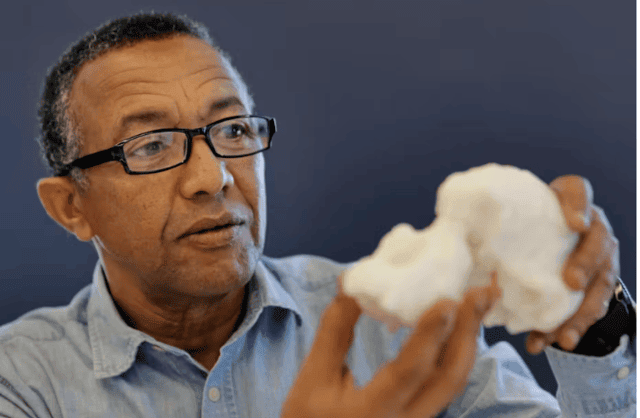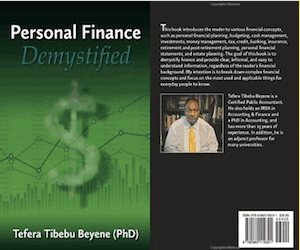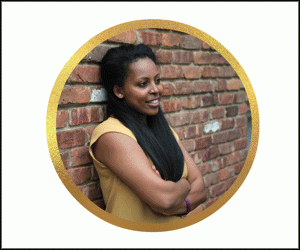 Professor Yohannes Haile-Selassie, a paleoanthropologist and director of the Institute of Human Origins at Arizona State University, reflects on Lucy’s legacy as Ethiopia celebrates 50 years since her discovery. (Alamy)
Professor Yohannes Haile-Selassie, a paleoanthropologist and director of the Institute of Human Origins at Arizona State University, reflects on Lucy’s legacy as Ethiopia celebrates 50 years since her discovery. (Alamy)
Tadias Magazine
By Tadias Staff
December 2nd, 2024
TADIAS (New York) – Fifty years ago, the discovery of Lucy placed Ethiopia at the heart of the story of humanity. As we celebrate this remarkable milestone, Tadias is honored to feature Professor Yohannes Haile-Selassie, a trailblazing Ethiopian paleoanthropologist and director of the Institute of Human Origins at Arizona State University.
Known for his pioneering fossil discoveries, including Ardipithecus kadabba and Ardi, Prof. Haile Selassie is a strong advocate for “decolonizing paleoanthropology,” championing the essential role of African scientists and institutions in the study of human origins.
We recently interviewed Prof. Haile-Selassie to explore the significance of Lucy and discuss the ongoing transformation of the field.
TADIAS: Prof. Yohannes, in scientific terms, what does Lucy mean to you and the broader field of paleoanthropology? Why is she still significant even half a century later?
Professor Yohannes Haile-Selassie: Lucy (“Dinknesh”) is recognized among the paleoanthropological community as one of the most iconic early human ancestor fossils that redefined how we understood our evolutionary history before the 1970s. Even though she was discovered 50 years ago researchers are still studying her bones using new analytical methods and advanced technology, such as CT-scanning, and generating additional data. I don’t think scientists will ever stop studying her because she keeps providing new information either about herself or some other newly discovered fossils.
TADIAS: What do you think Lucy’s discovery has meant for Ethiopia’s identity as the “cradle of humanity,” and how has it shaped the global understanding of human origins?
Prof. Haile Selassie: As an Ethiopian-born human origins researcher, I think Lucy, or Dinknesh, is one of the main sources of pride for all Ethiopians. It is where it all began, humanity, and figuratively every human being living today can trace their origins back to Ethiopia. Therefore, One shouldn’t wonder why Dinknesh is one of the main reasons for Ethiopia to dub itself as “The Land of Origins”. Dinknesh was the first early human ancestor fossil that made every human being on the face of the earth ask where they came from. Right after her discovery, her name became a household name, widely talked about in the media, many books written about her (her discoverer, Don Johanson, deserves credit for popularizing Lucy).
Dinknesh (Lucy) is 3.2 million years old, and at the time of her discovery fifty years ago in 1974, she was the oldest known human ancestor showing that walking on two legs is more ancient that previously thought. The earliest fossil evidence of human ancestors before her discovery was younger than 3 million years, based on discoveries from South Africa. Her antiquity, combined with how much paleoanthropologists were able to learn about her skeletal anatomy, the earliest phases of human evolutionary had to be re-written. The debates among scientists created enormous public interest on human origins, Her discovery also inspired the search for even more older human ancestors in new areas, which later resulted in the discovery of human ancestors that are twice as old as herself.
TADIAS: Your work has focused on groundbreaking discoveries like Ardi and Ardipithecus kadabba. How do these findings connect to Lucy’s story, and what new insights do they offer about our ancient ancestors?
Prof. Haile Selassie:: Ardipithecus kadabba is one of the earliest human ancestors currently known in the fossil record. It is dated to between 5.8 and 5.5 million years ago. Ardi is a partial skeleton from 4.4 million years ago. By the way, Ardi is a shortened version of her genus name Ardipithecus, and her species name is Ardipithecus ramidus. These two species are older than Lucy by more than 2 million years, and 1.2 million years, respectively. They were also found in the Afar region some 50 miles north of Lucy’s site.
They are connected to the Lucy story in two ways. First, the discovery of Lucy inspired survey and exploration in search of even older ancestors, and the discovery of the area where Ardipithecus kadabba and Ardipithecus ramidus were found was a result of that inspiration. Secondly, Lucy’s species, Australopithecus afarensis, did not directly descend from Ardipithecus kadabba or Ardipithecus ramidus. Instead, it descended from a species known as Australopithecus anamensis, a species that lived between 4.2 and 3.8 million years ago. However, her species’ ancestor is believed to have descended from Ardipithecus ramidus, which descended from Ardipithecus kadabba. Therefore, yes, she is related to both.
TADIAS: You’ve spoken passionately about “decolonizing paleoanthropology.” Could you share what this means in practice and why it is important for the future of human origins studies?
Prof. Haile Selassie:: Let me first start by explaining what “decolonizing paleoanthropology” means to me as well as I believe to others. The root word of “decolonizing” has a historically profound and repulsive meaning and applying it in any form to paleoanthropology, a scientific discipline that touches all of humanity, could sound like garbling the very meaning of the word. However, when some paleoanthropologists talk about “decolonizing paleoanthropology”, however sensitive it might sound, it is about changing the way we study our origins from one that is dominated by few (mainly western scientists) to one that is more inclusive, especially scholars from the countries where the fossil evidence is coming from and enable them to contribute meaningfully and tell the human story equally. One cannot deny that almost all of the fossil evidence for the earliest phases of human evolutionary history comes from Africa. Unfortunately, there were no Africans who were involved in studying the fossils until the late 1980s. Their role prior to that was facilitating research for western scientists and serving as laborers in the field. This has started changing slowly and many African paleoanthropologists are emerging now but there is still serious lack of training opportunity for local scholars, not to mention the lack of infrastructure for adequate training in their own countries, access to resources is limited, and community engagement is minimal. The future of paleoanthropology is going to depend on how we resolve these issues which, of course, are not limited to Africa.
TADIAS: What steps can be taken to empower African researchers and institutions in this field? How do you see the role of local communities and governments in advancing this effort?
Prof. Haile Selassie:: Empowering African researchers and their institutions starts with their governments and other stakeholders building the basic infrastructure necessary for paleoanthropology training programs and laboratory facilities. These are not things that individual researchers would be expected to do. However, researchers could help institutions by developing higher degree training programs and securing equipment that goes to the laboratory. African researchers need to increase public awareness on why understanding our past is important for the present and our future. What is needed is a concerted effort by bringing various stakeholders and researchers together with a common goal. African researchers and institutions should also make sure that local communities are informed and engaged in all activities in the areas where they live in.
TADIAS: Lucy has inspired generations of scientists and the public alike. What do you hope her legacy will be for the next 50 years, especially for young people interested in science and discovery?
Prof. Haile Selassie:: Lucy (“Dinknesh”) is an iconic treasure to all of humanity. Each of us could easily connect with her as our common ancestor. Her legacy for the last 50 years has been providing us with a wealth of information on how we became who we are today. Her inspiration of discovery will continue for many generations to come. Discovery and science are inseparable and discoveries can only be made by exploring new things.
TADIAS: Finally, as someone who has spent your career uncovering the story of humanity, what excites you most about the future of paleoanthropology? Are there any upcoming projects or areas of research you’re particularly looking forward to?
Prof. Haile Selassie:: Paleoanthropology has now become multidisciplinary. It is not about bones and stones anymore but also about past environments, climate change in the past, early human behavior, and how it relates to us today and to our future. Technological advances are allowing us to study ancient human ancestor fossil remains in ways that we couldn’t have thought possible when Lucy was found. For example, advances in genetics are now helping us extract ancient DNA from fossils and understand the genetic basis of various diseases that affect us today. Therefore, I would say that Paleoanthropology has a bright future, and it is becoming more exciting than ever.
I continue to do my fieldwork in the Afar region of Ethiopia and every fossil specimen that I find has some exciting story What I am looking forward to is my next field season in January.
TADIAS: Thank you so much, Professor Yohannes, and best wishes from all of us at Tadias.
Prof. Haile Selassie: Thank you!
–
Related:
Lucy 50—A Year for Human Origins – Institute of Human Origins
Join the conversation on Twitter and Facebook

























